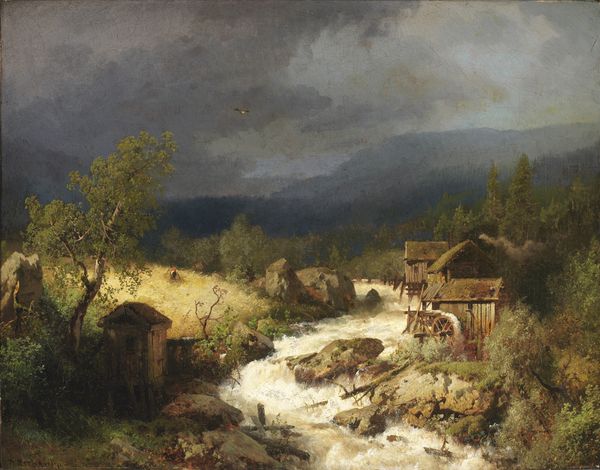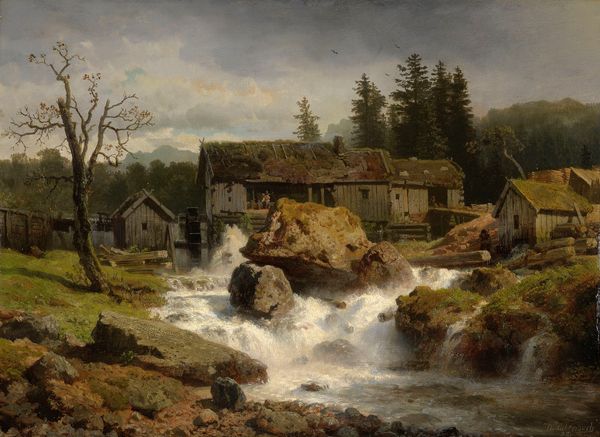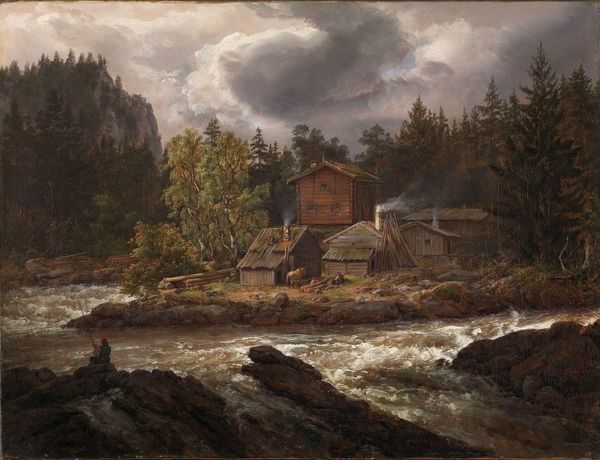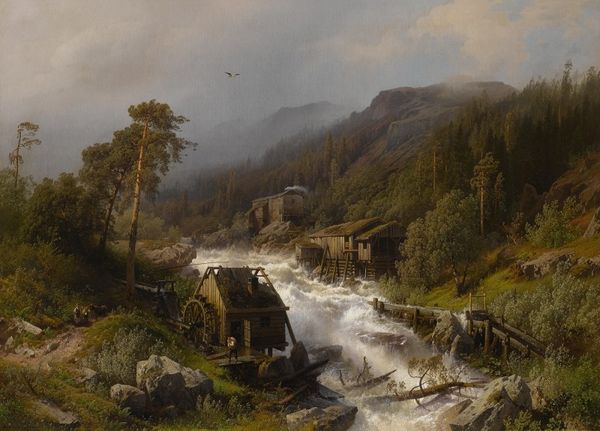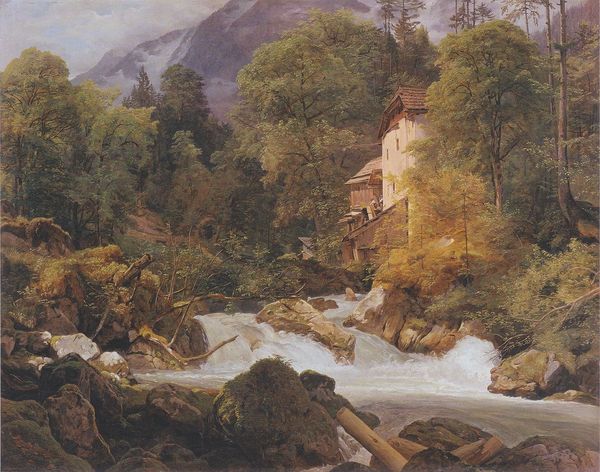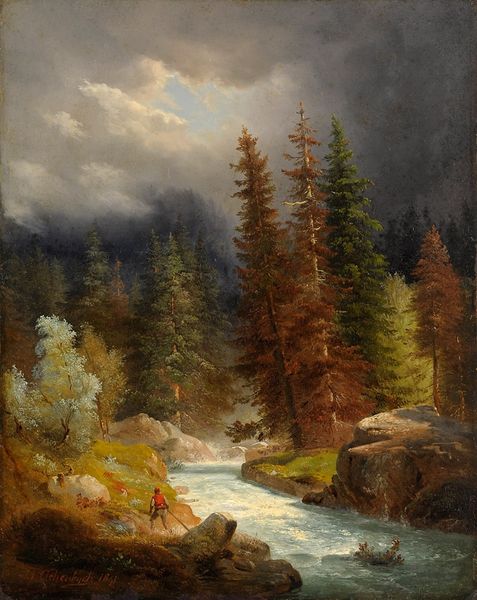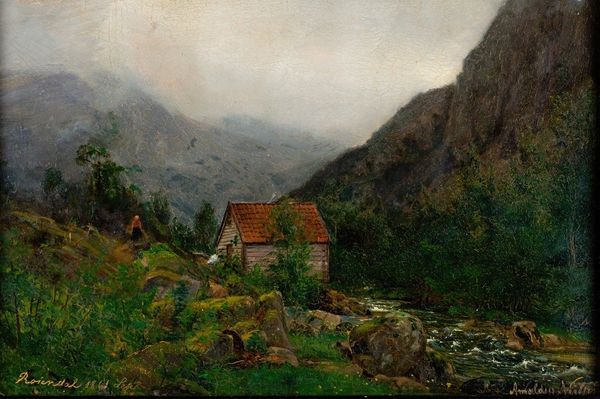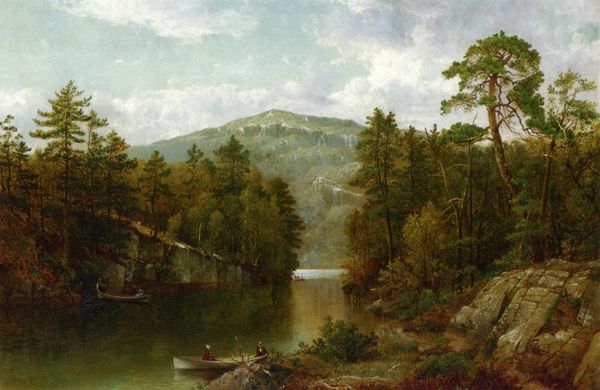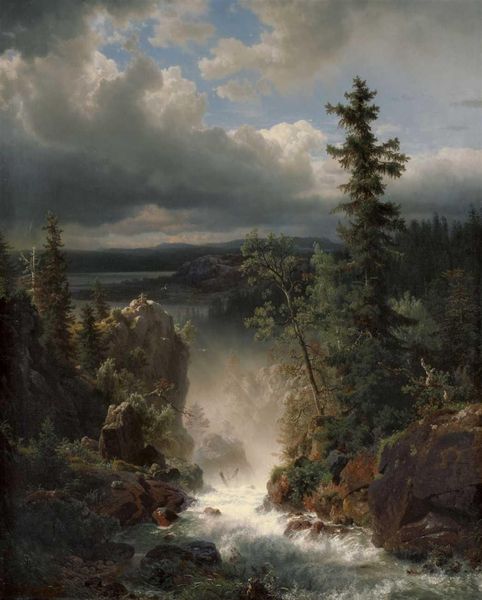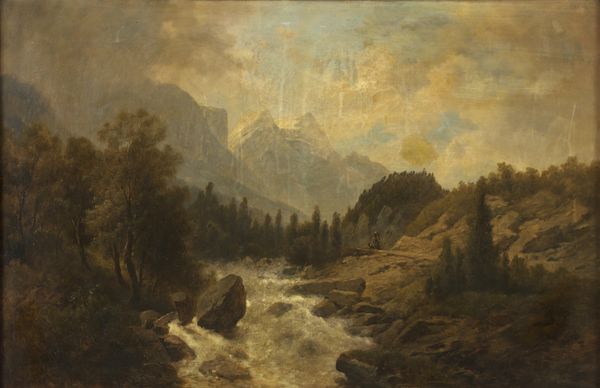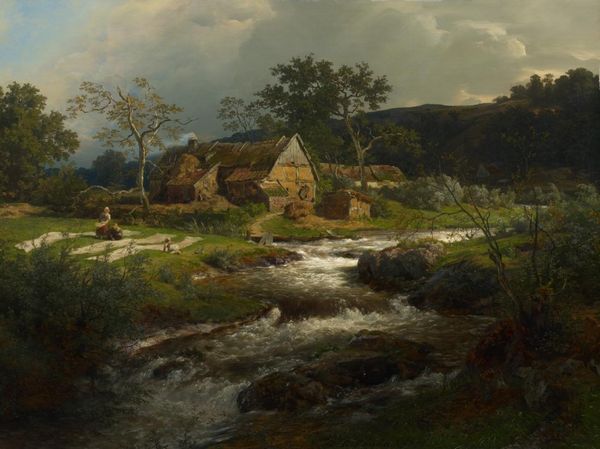
#
tree
#
fantasy art
#
atmospheric-phenomenon
#
landscape
#
possibly oil pastel
#
oil painting
#
fluid art
#
forest
#
underpainting
#
natural-landscape
#
surrealism
#
men
#
watercolour illustration
#
surrealist
#
nature
#
watercolor
#
environment sketch
Copyright: Public domain
Curator: Welcome. We are standing before Andreas Achenbach's "Mountainous Landscape with Stream and Watermill," completed in 1884. Editor: My first impression is the scene's dramatic lighting and powerful movement; the cascading waterfall creates an almost visceral sensation of energy. Curator: Precisely. Achenbach was celebrated for his ability to capture the raw power of nature, moving beyond idealized landscapes toward something more… real. This reflects a broader trend toward naturalism and realism in the late 19th century and emerging modern sensibilities. Think about class struggles playing out in artistic depictions. Editor: It's not only about realism. Consider the prominent position of the watermill—a classic symbol of industry and man's ingenuity, placed in dramatic opposition to the overwhelming natural landscape. Does the artist favor progress, or do they convey nostalgia for the landscape? Curator: That duality, the negotiation between human activity and the sublime power of nature, is crucial. Those figures climbing the path alongside the thatched buildings on the top left indicate themes of migration and economic realities driving rural populations. We should examine Achenbach's landscape tradition concerning contemporaneous sociopolitical upheavals. Editor: The bridge, as a symbol, stands out to me; bridges frequently represent transitions and the journey from one state to another. Also, water is an incredibly versatile emblem – a symbol of change, motion, but also of purification. Curator: Exactly! And by setting it against this misty, almost otherworldly backdrop, he asks viewers to ponder the relationship between industry and environmental impact. Who benefits and who is exploited? Editor: Thank you for framing that so precisely. I find myself questioning the balance—how do symbols in the image align with each other? What elements connect nature, society, and the more ethereal symbolic register? Curator: By positioning Achenbach in the context of resource management, human labor, and visual rhetoric of the era, we uncover rich cultural perspectives encoded in plain sight. Editor: Thinking about the water's reflective quality and that small group of figures making their way on the path makes me wonder about resilience. Curator: That's it! Both on individual and systemic levels, landscape embodies resilience! Thanks to symbolism, our understanding gains depth, while your intersectional interpretation roots us in complex reality.
Comments
No comments
Be the first to comment and join the conversation on the ultimate creative platform.
